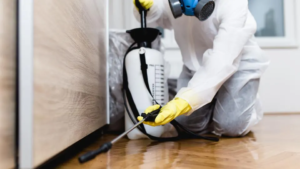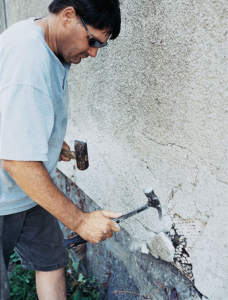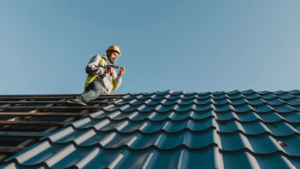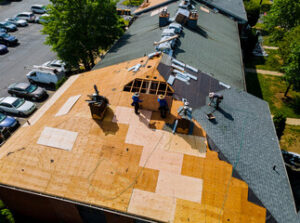Custom Blinds and Shades KY are a smart investment in the comfort, privacy and functionality of your home. They’re typically higher quality than ready-made options and offer a better fit.

They’re also designed to last longer than their ready-made counterparts. This guide will help you evaluate your lighting needs, decorative style, window shapes and room purposes to confidently select the ideal blinds for your space.
Choosing the color of your window blinds is a critical decision that can have a significant impact on how your Franklin home looks and feels. Whether you prefer a minimal and clean look or a cozy and warm atmosphere, the right colors can add the perfect finishing touch to your room.
Window blinds and shades are available in a wide array of colors to fit any aesthetic. However, it’s important to remember that the underlying tone of your colors is more important than their brightness or darkness. This is because the contrast between a cool or warm shade and a wall can create a jarring effect in your space.
If you want your blinds to blend seamlessly with your walls, you should match them in tone. This will help them to disappear when the blinds are lowered and will create a more cohesive look overall. You can also choose a shade that is a few shades darker or lighter than your paint color for a more interesting effect.
Lighter shades will allow more natural light to filter into your room, which can make it feel bigger and brighter. Additionally, light-colored window blinds hide dust and other marks more effectively than darker shades do.
On the other hand, if you’re looking for a more intimate atmosphere, dark-colored blinds may be the best option for you. Darker shades will create depth and warmth in your room, and they work especially well in larger rooms or longer walls that need a little extra engagement.
Customization
Whether you’re replacing blinds in your old home or picking them out for a new one, you can turn a room from drab to fab with the right window coverings. With custom blinds and shades, you have the ability to choose from a wide variety of colors, fabrics, and designs to create a stylish space that suits your personal tastes.
Unlike ready-made blinds that are mass-produced to cut costs, custom blinds are made by hand and tailored to fit your windows perfectly. This precision ensures that they look polished and professional and complement your home’s decor seamlessly.
With a wide range of colors, patterns, fabrics, and materials, there are endless possibilities to customize your window treatments. Whether you want to block out the sun, filter light, or add warmth and comfort with a woven wood shade, there’s a perfect option for every need.
You can also add the convenience of motorization to your custom shades, so they can be programmed to open and close at different times of day and night depending on your schedule. This means you can relax with a movie and keep your home’s interior cool while cutting energy costs at the same time.
If you’re interested in a high-end look, consider adding fabric tapes or tassels to your custom shades for an extra touch of style. You can even have your blinds personalized with images or quotes to create a fun design statement.
Energy Efficiency
Unlike the cookie-cutter blinds that you can purchase at the box store, custom window treatments are made to order, ensuring that your new window coverings will fit perfectly. This attention to detail not only creates a sleek, beautiful appearance for your home but also improves energy efficiency by minimizing drafts and helping to regulate indoor temperature throughout the year.
The best choice for energy efficiency is a cellular shade. These honeycomb shaped shades offer a layer of insulation that reduces heating and cooling loss for a substantial savings on your energy bills all year round. Plus, they come in a wide range of styles and colors for design aesthetics from classic to contemporary. You can even choose a double cell shade with two layers of cellular pockets to further maximize your energy efficiency and comfort.
Shades provide a more minimalist approach to window treatment and are a great option for homes that want to minimize visual clutter. They also feature many options for how you can raise and lower them, including motorization – another 2023 trend that allows you to control your window coverings with your preferred smart home system.
Drapes are a great option for homeowners who want to take advantage of the natural light in their home while providing maximum privacy and blocking out outside noise. They offer a wide variety of fabrics, designs, and colors, with opacities ranging from sheer to completely blackout. Plus, they’re a perfect solution for tall or difficult-to-reach windows.
When it comes to selecting a fabric for your drapes, look for low VOC (volatile organic compounds) materials that don’t release harmful chemicals into the air. Your design consultant can help you find the right fabric to complement your style and match the rest of your furniture and décor.
Privacy
If you’re concerned about privacy, custom blinds and shades are your best bet. Because they’re designed and crafted to fit your window exactly, they don’t have to be a compromise on either functionality or aesthetics. Customized window blinds and shades block the outside world while allowing in the soft light of the sun, providing a zen-like sense of privacy and obscurity.
In addition, customized blinds and shades are a great choice for families with young children, as they eliminate the risk of dangling cords that pose a strangulation hazard. Louisville Blinds and Drapery offers a range of options that include cordless designs and motorized systems for a sleek, stylish look with optimal safety.
Shades differ from blinds in that they don’t have slats, which means they’re a great choice for those looking to manipulate the amount of natural light entering their space. They can also enhance the look of large windows and sliding doors with their elegant simplicity. The fabric options for this type of window covering offer a wide array of visual textures, and many come lined with energy-efficient materials to help cut down on your home’s energy costs.
While it may be tempting to go with cheaper ready-made window treatments to save money, they’ll likely need to be replaced sooner than their high-quality, custom counterparts. Moreover, they often come in one standard size that’s not perfectly suited to your windows.
On the other hand, custom blinds and shades are designed to be a long-term investment. Because they’re made to order, they’re guaranteed to fit your windows perfectly and can be easily adjusted with a touch of a button or integrated into smart home systems for increased convenience.
Maintenance
Unlike ready-made options, custom blinds and shades are designed with superior quality. This means they’re more resilient to damage, fading and sun exposure, making them easier to clean and maintain over time. This helps them look and feel like new for longer, reducing their overall cost.
In addition to this, custom window treatments often come with a better warranty than their ready-made counterparts. This further demonstrates their commitment to quality, helping you get the most out of your investment over time.
The beauty of custom window treatments is that they’re crafted based on the exact dimensions of your windows. This guarantees a perfect fit, avoiding unsightly gaps and improving the functionality of your home’s lighting, privacy, and energy efficiency.
With a variety of styles, colors and materials to choose from, they’re also easy to match with any interior design style, blending seamlessly into both traditional and modern rooms. If you’re looking for a more sleek, architectural appearance, opt for roller shades or roman shades. They’re available in both hard and soft fabrics, and offer a clean finish that frames your windows flawlessly.
For a more dramatic impact, consider cellular shades or window quilts. These resemble traditional shades but boast a snugger fit and R-value increases, allowing them to block more light and improve energy efficiency. Plus, they can be automated, allowing you to set up a schedule to open and close them at predetermined times, helping reduce your heating and cooling bills.
If you’re interested in smart window treatments, consult with a specialist to learn more about the different options and features available. They’ll be able to advise you on what type of solution is best suited for your space, and help you create a comfortable, stylish and functional living environment that will stand the test of time.







